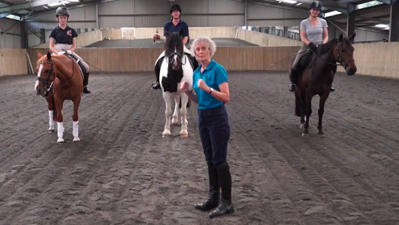THE JUDGE’S COMMENTS AND THEIR MEANINGS
November 9, 2015BTV = Existential Crisis?
November 9, 2015SPECIAL NOTICE : TODAY IS THE LAST CHANCE TO GET ACCESS TO THE ENTIRETY OF THE HOW OF RIDING
In the next day or two we are changing most of our courses to deliver lessons at the rate of one per month. By signing up today, before this major change of policy, you will get access to several complete courses immediately. Now is the best time to sign up as you will get access to our existing material AND get new material each month too
SCROLL DOWN TO LEARN MORE
THE BIGGEST MISTAKE
It is a mistake that I made for many years, because sometimes it is the easiest temporary fix. However it will never hold up as a long term training method.
THE 'ON THE BIT' MISTAKE
The mistake is due to a lack of understanding. It centers around the idea of the horse being on the bit. I think it is the belief that if you were just to get the horses head down, it would be doing dressage. I may be doing the world a disservice about assuming that this is the thought process people maintain, however what I see before me bears this out. I see many riders using their hands, trying to get or keep the horses head down. It results in comments such as ‘inconsistent to contact’ and ‘hollow’ and ‘tight over back’. It can lead to horses which are tense in their movement which lack the ability to track up. It can create other compounded evasions such as head tilting, throwing the head, and evasions of straightness.Below I include a video which talks about what On The Bit really is and how we should be thinking about it.
If you have been trained that you need to use the rein to keep the horses head down, and that it is more than 20% of your focus when riding, you are barking up the entirely wrong tree and have your focus in the wrong place. I know this from experience, I spent many years doing and thinking exactly this!
For a horse to work correctly on the bit, it must be reaching over its back, and that this reach must continue over its neck and into the rein. The rider does not pull the horses head and neck into place, the horse puts itself there. The rider provides a framework, but the horse lifts back and the reaches into the rein. If you want to learn more check out our courses below.



